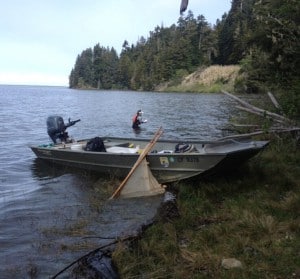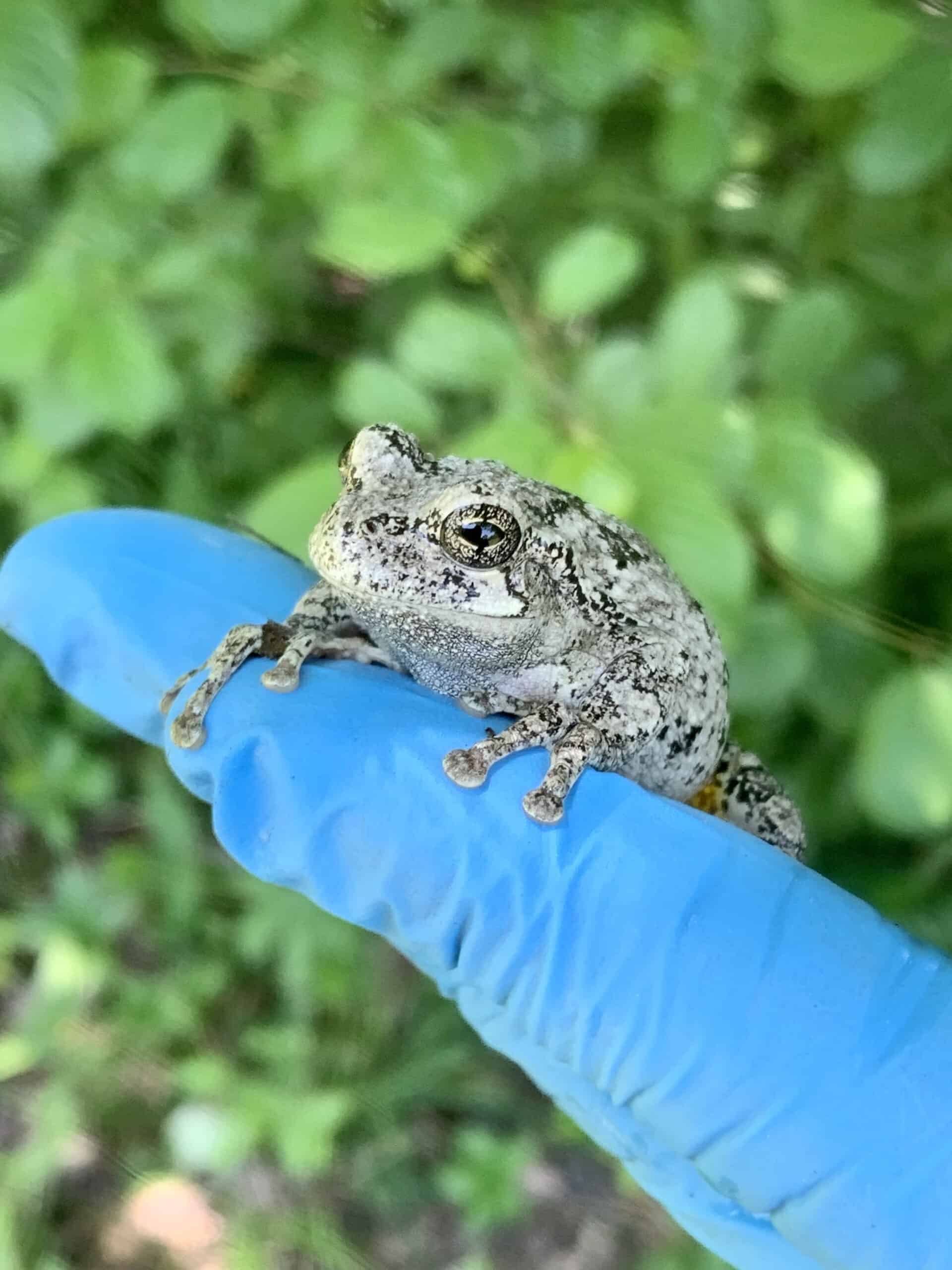Share this article
Using environmental DNA (eDNA) to monitor endangered fish
In collaboration with the California Cooperative Fish and Wildlife Research Unit, geneticist Andrew Kinziger and graduate students at Humboldt State University set out to determine whether eDNA methods provide improved sensitivity to detect rare and endangered species in comparison with traditional monitoring techniques.
Studies like these at Humboldt State University, and a myriad of similar investigations being conducted around the world, are showing that eDNA methods provide a high power tool for monitoring fishes, especially for species which are rare, endangered or invasive.

Student sampling Tidewater Goby, Big Lagoon, Calif. ©USGS.
Researchers compared eDNA approaches to traditional field survey methods (seining with a net) for detecting the presence/absence of the federally endangered tidewater goby along the northern California coast. Their research, which was recently published online in the journal Molecular Ecology Resources, revealed that eDNA approaches had almost twice the sensitivity of traditional monitoring methods for tidewater goby. In fact, using eDNA methods, the tidewater goby was shown to occupy locations where it had not been previously reported, thereby expanding the known geographic distribution of this endangered species. This new information is being integrated into analysis mandated by the U.S. Fish and Wildlife Service Recovery Plan for the Tidewater Goby.
Imagine if you could determine what species of fish live in a river, lake, stream, or the ocean by collecting a water sample. Such an idea would have seemed like science fiction 25 years ago, but advances in molecular biotechnology methods are now making it possible to use water samples to monitor for the presence of fishes and other aquatic organisms.
During the course of their life, fish shed epidermal cells, urine, feces, and mucous into the surrounding environment. Using modern molecular methods, scientists can test water samples for the DNA in these cells and extracellular products to determine the presence or absence of particular species and even their abundance. Such approaches are revolutionary in fisheries management, as traditionally it has been standard to monitor abundance and distribution of fish populations by physical collection with traps, nets and even electricity.
eDNA approaches hold advantages in comparison with traditional field approaches. Water sample collections allow for sampling in conditions (e.g., too deep, unforgiving substrate) where traditional field collection approaches fail. Sampling is non-invasive, and does not result in tromping natural habitats or causing stress, injury or death associated with physically catching and handling fishes. Expert taxonomic skills in the field are unnecessary. As DNA is the same for a larval fish as an adult fish, eDNA can detect an organism at any life stage, with a sensitivity as low as one copy of a single DNA molecule. Field costs and field effort are decreased, and the turn-around time of eDNA results can be rapid. Moreover, since eDNA approaches do not involve direct “take” of the study organism, permitting requirements from state and federal agencies to collect scientific samples are reduced.
Despite these advantages, eDNA methods do have limitations. Current research shows that eDNA likely persists for a several weeks in natural environments, meaning that a positive eDNA test indicates recent presence. However, the relatively long survival time of eDNA in water, combined with the potential for its long distance dispersal in water currents, may mean that eDNA detection may occur a long distance from the target organism. Thus, caution needs to be taken when using eDNA approaches to identify microhabitat preferences of a species, or when water currents, such as those occurring within a large river system, can rapidly redistribute eDNA, improved understanding of how water currents redistribute eDNA is needed.
Nevertheless the future of eDNA approaches remains bright and such approaches will likely become a standard monitoring tool in the future. Dramatic advances in DNA sequencing technologies over the past 10 years are paving the way for expansion of eDNA approaches.
It is now possible to generate billions of DNA bases in a day using contemporary sequencing technologies. Application of these cutting-edge sequencing methods within an eDNA context will likely make it possible to conduct full inventories of biodiversity within target water bodies, including complete lists of all fishes, invertebrates, plants, bacterial, parasites, aquatic mammals and birds – all from one water sample.
Research is also underway to expand eDNA approaches from a simple presence/absence tool to an approach that could be used to estimate relative abundance or biomass. Here, the number of copies of eDNA in the environment are being proposed as a proxy for species abundance.
For more information contact Peggy Wilzbach, Unit Leader at the USGS California Cooperative Fish and Wildlife Research Unit.
USGS is a Leading Sponsor of The Wildlife Society.
Header Image: Large adult Tidewater Goby. ©USGS








